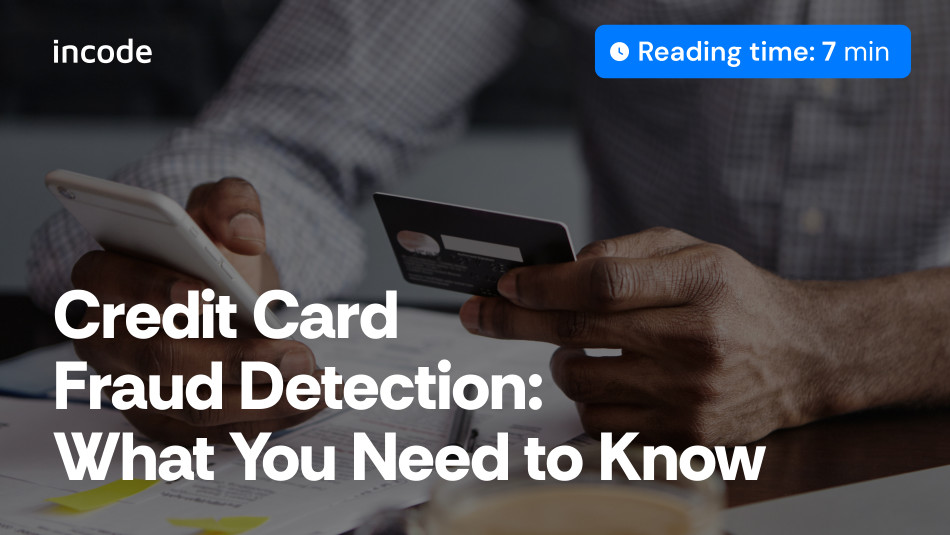Credit card fraud has been an increasingly prevalent issue. In fact, the U.S. Federal Trade Commission (FTC) has classified it as the most common form of identity theft in the country.
Even the most vigilant credit and debit card bearers can have their information stolen and their cards used to make unauthorized purchases or get cash advances. Hence, the crucial nature of credit card fraud detection solutions. From the most basic precautions to the most advanced AI-powered tools, leveraging machine learning and data analysis, let’s explore the techniques available and define the best approach.
Understanding Credit Card Fraud
Credit card fraud is a common form of identity theft where criminals gain access to someone’s credit card, debit card, or bank account without permission. They use these means of payment to make purchases or get cash advances without consent from the cardholder.
The Evolution of Credit Card Fraud
In the early days of credit cards, when a simple swipe and signature were all it took to make a purchase, credit card fraud was as easy as physically stealing someone’s wallet. Of course, this can still happen, but cloning, card skimming, account takeovers, and card-not-present theft – where fraudsters obtain card or account information through phishing, hacks, or by purchasing it on the dark web – are now much more prevalent. As these attacks have become more sophisticated, being “careful” is no longer sufficient, and reliable credit card fraud detection is crucial.
Common Types of Credit Card Fraud
Credit card fraud includes various scams ranging from simple card theft to identity theft, where criminals open new accounts in their victims’ names. This is why credit card protection methods must be well-rounded and technologically advanced.
- Credit card theft: This is the most basic form of credit card fraud. It involves stealing a physical credit card through pickpocketing, snatching it from a restaurant table, grabbing someone’s purse or wallet, retrieving a newly issued card from a mailbox, etc.
- Account takeover: This attack relies on impersonation. The fraudster contacts the bank or other card issuer, providing enough personal information about the cardholder to gain access to their mailing addresses, passwords, PINs, and other details. This allows thieves to control the account and lock out the rightful user.
- Phishing: This is often how account takeovers can be achieved in the first place. This scam consists in sending fraudulent communications that appear to be from a reputable and legitimate source, often through text messaging or email. The attacker aims to gain access to sensitive data, install malware on the victim’s device, or sometimes simply convince the victim to send them money willingly.
- Cloned cards: This is a practice by which criminals create a duplicate of their victim’s card number for illicit use. This is achieved by fitting devices called “skimmers” over card readers – particularly on gas pumps – and sales terminals.
- Card-not-present theft: This refers to any fraudulent use of a credit card without possessing the physical card. Since online purchases don’t require the card itself, having access to the cardholder’s name, account number, and security codes can be enough to use it. As for obtaining the information, it can be done through hacking or phishing. Some criminals even specialize in selling credit card information online, typically on the dark web.
How Is Credit Card Fraud Detected?
Credit card fraud detection involves various strategies, ranging from manual routine checks and good practices to fully automated, AI-powered techniques.
Traditional vs. Modern Credit Card Fraud Detection Methods
Traditional anti-credit card fraud techniques mainly rely on prevention and attentiveness. Some of the most basic precautions users can take are to:
- Review statements regularly, ensuring every purchase or cash advance is accounted for.
- Check their credit report, looking for unfamiliar inquiries or accounts they didn’t open.
- Secure their physical cards, never leaving them unattended.
- Pay attention to their surroundings to avoid pickpockets.
- Check that nothing is amiss with a payment terminal before using it.
- Be vigilant online and on the phone, and never provide personal information to someone they haven’t themselves contacted.
For banks and credit card companies, credit card fraud detection mainly took the form of account monitoring with thresholds over which matters would be further investigated. For example, multiple transactions carried out over a short period, large purchases, multiple transactions from the same retailer, transactions involving foreign countries or unusual locations, etc., would trigger the system.
The issue with these credit card fraud detection methods is that they either require constant vigilance from the cardholder or identify fraudsters only after the fact.
Modern techniques, on the other hand, leverage advanced technologies to detect credit card fraud as it happens and verify every single transaction, authenticating the cardholders’ digital identities and using machine learning to monitor suspicious activities.
Technologies Powering Fraud Detection
When it comes to credit card fraud detection, machine learning, AI, and biometric verification have radically changed the game. Card networks (Mastercard, Visa, American Express) and providers prevent fraudulent card usage by issuing more secure means of payment:
- 3D Secure: This standard created by Mastercard and Visa secures transactions at three different levels: the issuer, the merchant/purchaser, and the interoperability domain, requiring further verification steps.
- Multi-factor authentication: This solution offers additional layers of security by sending the user verification codes to their personal devices or email addresses, mandating a combination of PINs and biometrics, etc.
- Account takeover tools: These systems compare current behavior with past usage and request additional information (PIN or CVV) to detect account takeovers.
- Biometrics: Cameras or fingerprint readers can be used to verify the cardholder’s identity. Some systems also use voice recognition to authenticate callers.
- One-time passwords: These systems require users to enter a one-time password sent to their preselected devices to validate payments.
- Adaptive authentication: AI-powered adaptive authentication is a credit card fraud detection method that analyzes customer transactions to detect any activity that deviates from the cardholder’s normal behavior.
- Advanced analytics: This technique relies on AI and machine learning to detect abnormal card use by identifying unusual spending amounts, locations, etc.
- Tokenization: Randomly generated tokens can replace sensitive data such as credit card numbers, making it impossible for hackers to read.
Enhancing Your Security: Preventative Measures
All this credit card fraud detection technology finds applications in the security features available to cardholders and businesses who wish to secure their transactions.
For Consumers
In our increasingly cashless world, credit card safety is a crucial matter. For consumers, additional credit card security measures include:
- Enabling always-on credit card fraud detection features to check for fraudulent activity regardless of time and location.
- Turning on geolocation for location-based security features, such as matching the phone’s location with a transaction.
- CHIP technology. While not new, the technology involves increasingly secure microchips that store data much more securely than magnetic stripes.
- PIN goes hand in hand with CHIP and ensures only someone who knows the code can complete a purchase.
- Online Transaction Security Guarantee. Setting this up guarantees that, in the event of credit card fraud, the cardholder is not held liable for transactions made without their knowledge or consent.
- Virtual credit cards allow users to make secure transactions without disclosing personal information.
- Push notifications rely on the bank’s mobile app to alert users immediately whenever suspicious transactions occur.
For Businesses
Merchants can also take advantage of credit card fraud detection systems and implement advanced solutions to protect themselves and their customers:
- KYC (Know Your Customer) alerts businesses whenever a user fails to provide every point of reference to validate a card transaction.
- KBA (Knowledge-Based Authentication) tools check the personal information provided for a transaction against known customer details to confirm their identity.
- AVS (Address Verification Service) authentication compares the user’s billing address with the address recorded by the card provider, making sure they match.
At Incode, we revolutionize identity solutions by providing optimal security through seamless technology.
Contact us now to learn more about our cutting-edge approaches to fraud detection.

